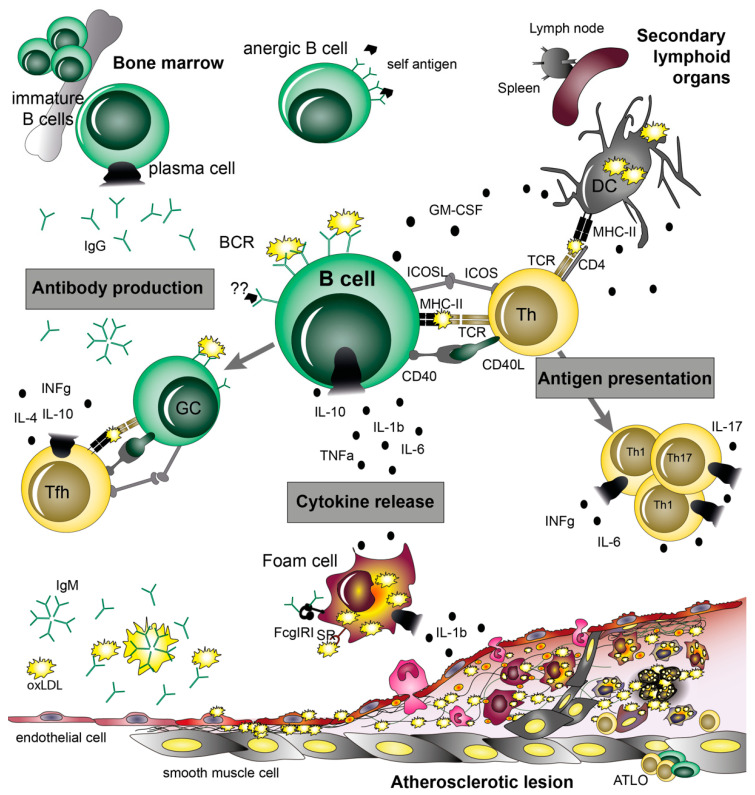Figure 3.
B cell functions in atherosclerosis. B cells can play both atheroprotective and pro-atherogenic roles, which are mediated by their main effector functions: (i) antibody production, (ii) cytokine release, and (iii) antigen presentation/interaction with T cells, which are dependent on their subset and activation state. By detecting (self)antigens via their specific B cell receptors (BCRs), B cells become activated and differentiate into antibody-producing plasma cells. This process is supported by the interaction of germinal center (GC) B cells and T follicular helper (Tfh) cells and results in the release of immunoglobulins (Ig). Ig can activate various cell types (e.g., macrophages) by binding to their respective Fc receptors (FcR), neutralize oxidized lipoproteins (oxLDL), and initiate complement activation and opsonization. Moreover, via release of cytokines such as TNFα, IL-6, IL-1β, GM-CFS, and IL-10, B cells are able to affect their microenvironment in a pro- and anti-inflammatory way. In secondary lymphoid organs (spleen and lymph nodes) and arterial tertiary lymphoid tissues (ATLOs), interactions between B cells and Th cells take place via binding of co-stimulatory molecules (e.g., ICOS/ICOSL, CD40-CD40L) as well as antigen presentation of B cells via MHC-II.

